Image Archive


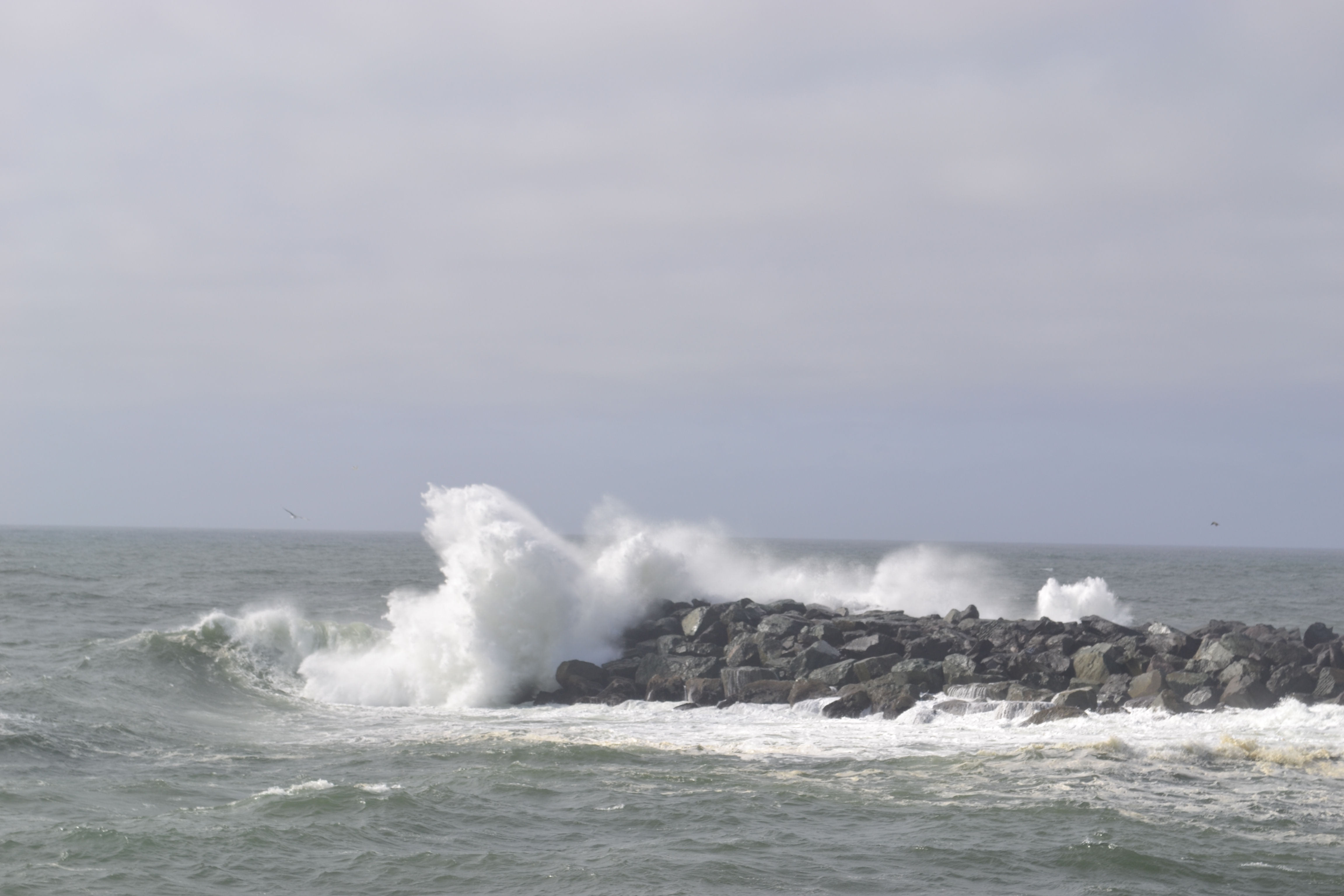
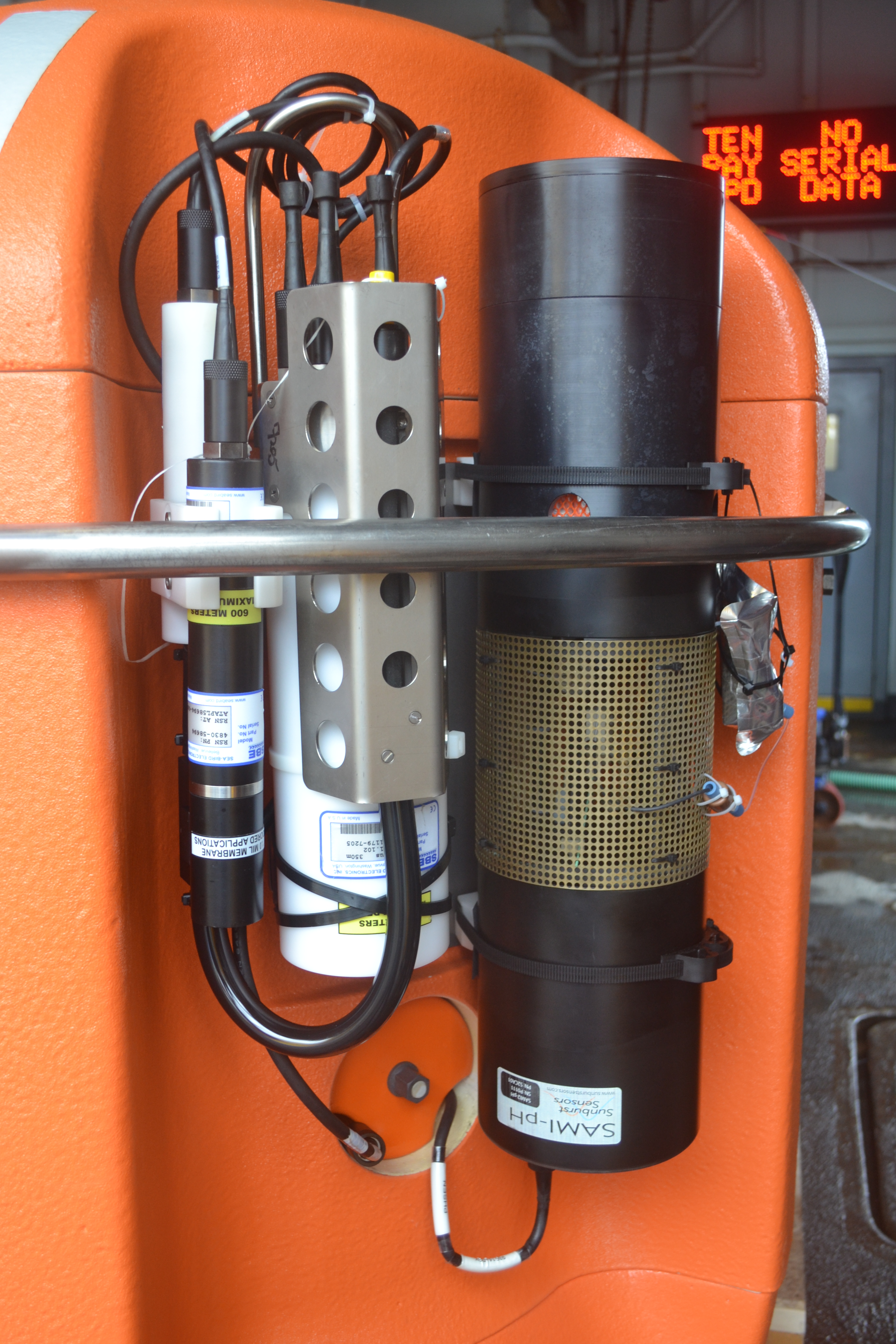










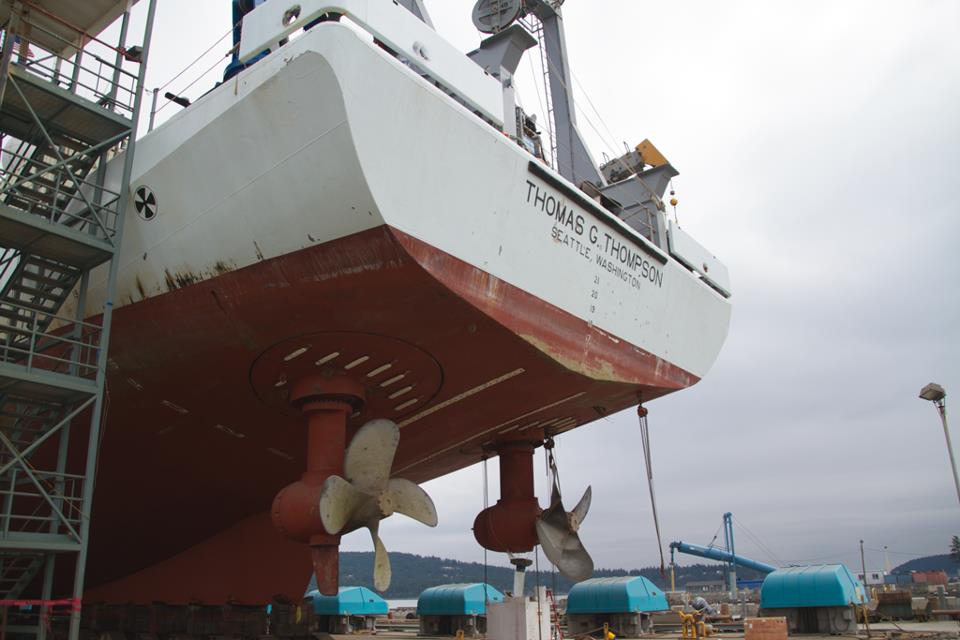





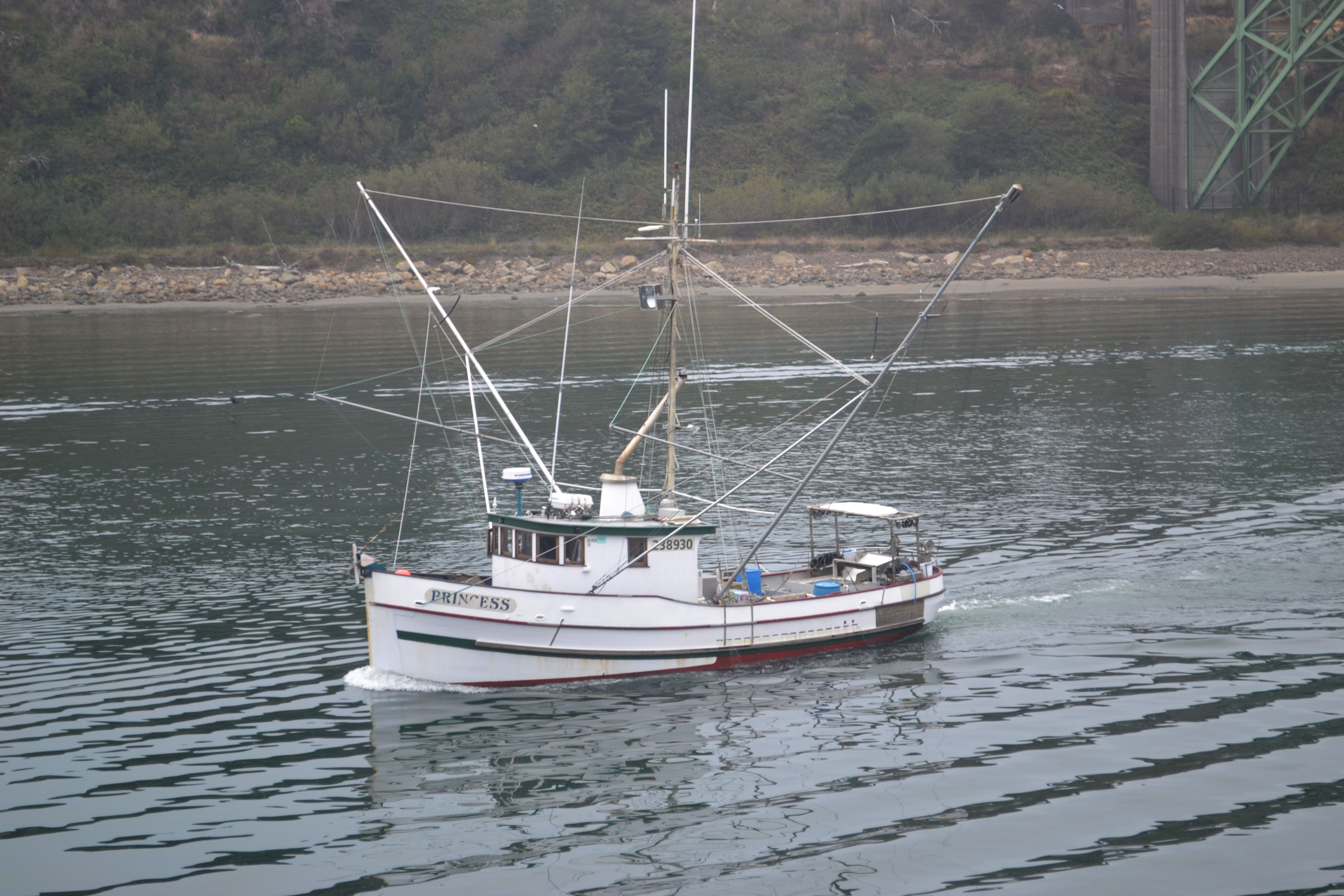
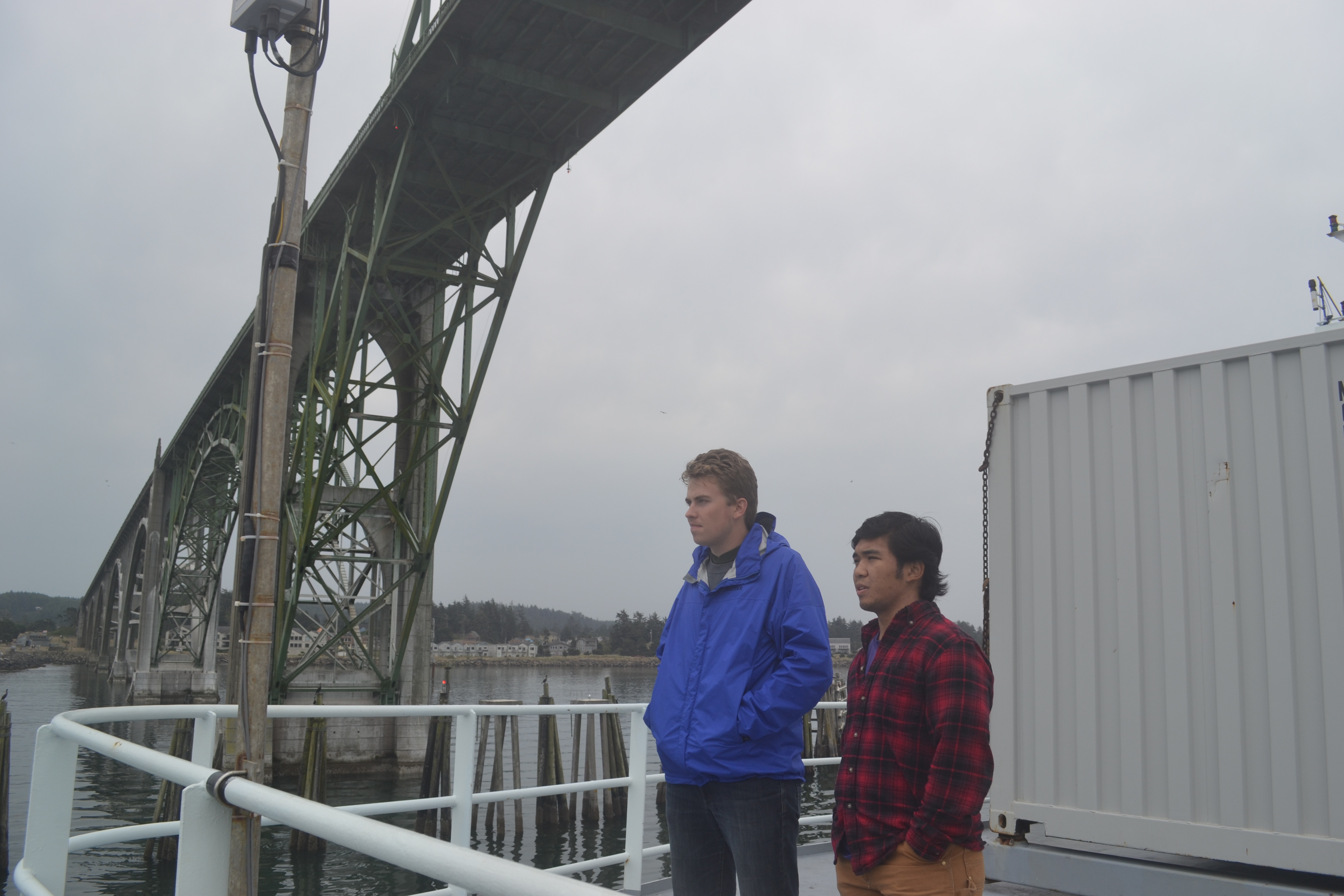


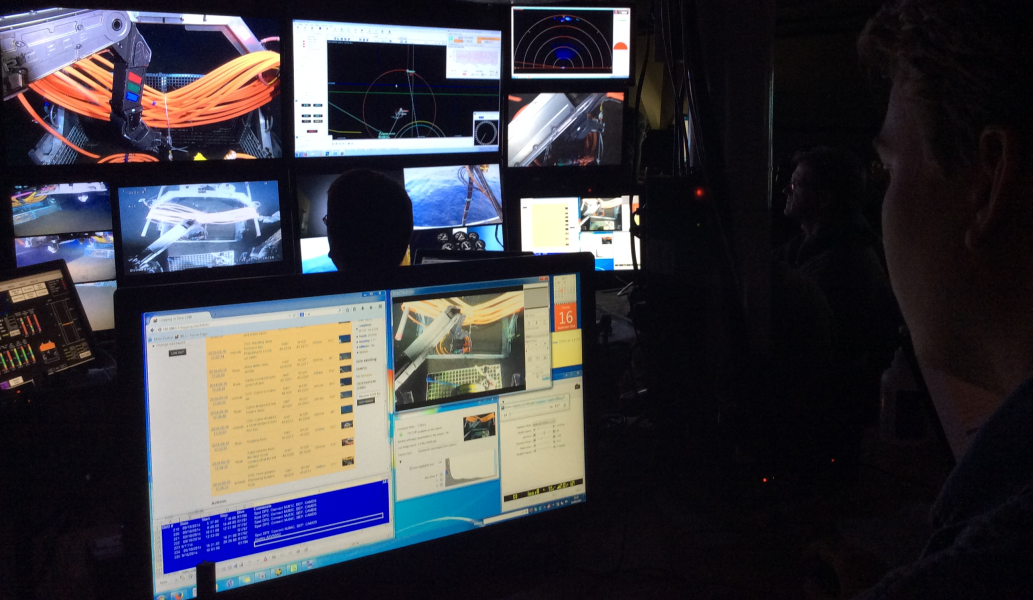




Graneledone pacifica

Graneledone pacifica octopus at Axial Seamount. Credit: UW/NSF-OOI/CSSF, V14.

Storm generated swell breaks on the north jetty entrance to Yaquina Bay.

SBE43 oxygen sensor (left) is shown on the Shallow Profiler Science Pod, which will profile between 200 m and the surface. Photo credit: Mitch Eland (UW)

The CTD is sensor in the middle, between the SUNA nitrate sensor (right) and SBE43 oxygen sensor (left). Photo credit: Mitch Eland, UW

Larry Nielson handles the dock lines between legs 5 and 6.

A huge hurricane strength storm currently sits 1000 miles offshore and moving towards our working area. While the storm will diminish by the time it reaches the cabled observatory site, it will have generated very large seas that make working with the ROV impossible until at least Friday morning the 26th of September. Credit: passageweather.com

Posing with the CTD Rosette are Leg 5 students Photo credit: Mitch Elend, UW RSN, V14

ROPOS just beneath the surface prepparing to dive to 2900m. Credit: Mitch Elend/UW

r1791_highlights

r1790_highlights

r1789_highlights

r1788_highlights

Max Schrempp is logging ROPOS's first dive of Leg 5. Dive R1788 will connect the smart leg of the shallow profilers 2 legged vertical mooring to the cable infrastructure. Photo credit: Trevor Harrison, U of Washington, V14

The R/V Thompson’s Z-Drives exposed at dry dock. The dark circle in the hull surrounding each propeller rotates, allowing complete control of the thrust vector. This is a critical component of the dynamic positioning system. Photo Credit: Ed McNichol, 2012

Preparing to deploy the CTD Photo credit: Mitch Elend, RSN, UW, V14

ROPOS preparng to plug the VM EOM cable into the FACT strongback. Photo credit: NSF-OOI/UW/CSSF; Dive R1788; V14

Mike radios down to the crew as he operates the winch. Photo Credit: Colin Katagiri

Preparing to deploy the Shallow Profiler Mooring at Axial Base. Photo Credit: Colin Katagiri

A stack of three 2000-pound steel plates is lowered to the deck of the Thompson by a large crane on the dock. Six of these plates will comprise a single anchor for the two-legged mooring that will be deployed at the base of the continental slope, 56 nautical miles off the coast of Oregon. The mooring will have two such anchors so the deck load on the Thompson will be considerable for this leg. Credit: Mitch Elend

A commercial troll-fishing boat heads out to sea. When the boat is fishing, weighted cables with streaming fishing lines will be suspended from the long polls and salmon will be caught using hooked lures. The catch is small but the quality is high, this is the salmon that you might have served to you on an alder plank in a nice restaurant. Credit: Mitch Elend

Students, Max Schrempp (left) and Jae Jose look on as the Thompson passes under the Yaquina Bay Bridge on the way in to Newport. Credit: Mitch Elend

A short-period seismometer being installed on a sheet flow at the summit of Axial Seamount to measure seismic events. Credit: UW/NSF-OOI/CSSF, V14.

katie.title_.use_.001

Max Schrempp controls the Digital Still Camera as part of his watch. Good luck figuring out what monitor is actually showing the image he logs. It might seem like overkill (and there's at least another half dozen outside the image), but each one has a purpose. Navigation, monitoring, manipulation. It all starts here, and finishes down there. Photo Credit: Trevor Harrison, University of Washington, V14

In the dark of night, ROPOS with the tool basket mounted beneath, eagerly awaits its mission. A cruel crane operator, hidden the shroud of darkness(bottom left), holds it tauntingly dangled over the water, a meter from the glory of immersion. Photo Credit: Trevor Harrison, University of Washington, V14

University of Washington undergraduate and graduate students from the College of the Environment, School of Oceanography and Engineering gather on the bow of the R/V Thompson as part of the student at-sea program. Photo Credit: Mitch Elend, University of Washington, V14.

Wire baskets full of 85 syntatic foam "football" floats to be placed on the Axial Base EOM cable. The mooring platform, 46" and 31" mechanical leg floats can be seen in the background streamed out behind the ship. Credit: Giora Proskurowski
- Anemone
- Animal
- Arthropod
- ASHES
- Axial
- Axial Base
- Axial Biology
- Axial Caldera
- Bacteria
- Basalt Lava
- BEP
- Biofouling
- biolgoy
- Biology
- Camds
- Camera
- Camhd
- Central Caldera
- Ciliates
- Cnidaria
- Coastal Biology
- Crab
- Deep Profiler Mooring
- Dive Highlights
- Eastern Caldera
- Echinoderms
- Endurance Array
- Engineering Team
- ENLIGHTEN 10
- Exploratorium
- Fish
- Geology
- HD Camera
- HPIES
- Hydrate Ridge
- Hydrates
- Hydrophone
- Hydrothermal Vents
- Illustration
- Inshore 80 Meters
- Instrument
- International District
- J-BOX
- Jason
- Jellyfish
- Junction Box
- K12
- Lava
- Mollusk
- Moorings
- Nodes
- Nudibranch
- Octopus
- OOI
- Oregon Offshore
- Oregon Offshore 600 m
- Oregon Shelf
- Oregon Slope Base
- People
- PN1B
- PN1D
- Polychaetes
- PPSDN
- Primary Node
- RASFL
- ROCLS
- ROPOS
- ROPOS Dives
- ROV Team
- RV Revelle
- RV Sikuliaq
- RV Thompson
- Salp
- Sample
- SC13
- Science Team
- Sea Cucumber
- Sea Star
- Sea Urchin
- Seafloor
- Seismometer
- Sensors
- Shallow Profiler Mooring
- Shark
- Shipboard
- Shore Station
- Slope Base
- Smoker
- Soft Coral
- Southern Hydrate Ridge
- Sponge
- Squid
- Students
- Students & Guest Participants
- Tmpsf
- Tubeworms
- VISIONS 11 Leg 1
- VISIONS 11 Leg 2
- VISIONS 11 Viewers
- VISIONS 13
- VISIONS 14
- VISIONS 15
- VISIONS 16
- VISIONS 17
- VISIONS 18
- VISIONS 20
- VISIONS 22
- VISIONS 23
- Visualization
